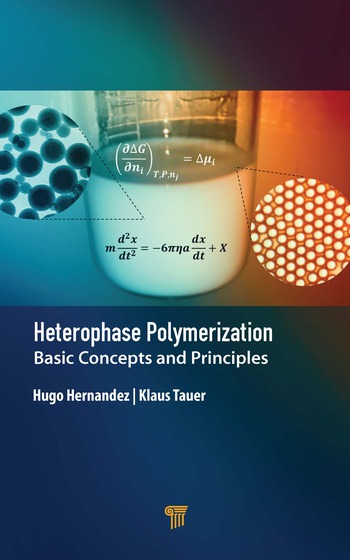Ask Dr. Dave
June 2005
QUESTION: Can you recommend epoxy hardeners that are suitable for formulating adhesives and impregnation resins for high-performance composites? We need a system that has good pot stability after mixing but will also cure rapidly at 100-150°C.
ANSWER: What you are looking for are the so-called "latent hardeners." Most of these hardeners have historically been based on dicyandiamide, a chemical that is insoluble in epoxy resins at room temperature but dissolves at high temperatures and then initiates curing. However, it has always been difficult to formulate systems with long pot lives and short curing times, and there has been a lot of research in recent years to improve this situation. I would recommend that you look at some of the newer curing agents based on boron trifluoride-amine complexes. Until recently, there were only a few variations of these available, but there is now quite a range of them using aliphatic or aromatic amines. You should be able to find the appropriate one for your particular system.
QUESTION: We use many different adhesives in our woodworking business, including several hot melts and some latex adhesives. It would be a real advantage to us if we could simplify our selections. What would you recommend, particularly from the hot-melt side?
ANSWER: This is a very broad question. There are many reasons for the use of such a range of adhesives in your industry. Woodworking adhesives are used for a number of applications, including panel bonding, edgebanding, soft forming, profile wrapping and V-grooving, and these applications often have different requirements in terms of desired cure speed and bonding capabilities. Furthermore, the ability to bond to a range of substrates is important in this industry where materials include melamine-impregnated paper, high-pressure laminates, wood veneer, polyester, ABS, polyester and PVC. You will never be able to find one hot-melt adhesive for all of your applications; in your industry, hot melts are often filled with inorganic fillers that serve to lower costs and adjust the rheology of the products. One recommendation I would make is to test some of the newer unfilled hot melts. These may be more expensive, but most customers find that they prove more cost-effective in the long run because of better productivity, more substrate versatility, more reliable bonds and more stability in their application equipment. You will probably have to make some changes in your application equipment to accommodate these adhesives.
Q&A Exchange is written by Dr. Dave Dunn of F.L.D.Enterprises, a technical consultancy and full-service industrial market research firm specializing in the adhesives, sealants, specialty rubbers, and plastics fields. Dr. Dave is a former vice president and director of Loctite Corp., and has spent many years troubleshooting adhesive and sealant problems. Questions for publication should be directed to him at 242 Trails End, Aurora OH 44202; (330) 562-2930; FAX (865) 251-9687; e-mail DrDave242@att.net; or visit http://www.fldenterprises.com.
QUESTION: Can you recommend epoxy hardeners that are suitable for formulating adhesives and impregnation resins for high-performance composites? We need a system that has good pot stability after mixing but will also cure rapidly at 100-150°C.
ANSWER: What you are looking for are the so-called "latent hardeners." Most of these hardeners have historically been based on dicyandiamide, a chemical that is insoluble in epoxy resins at room temperature but dissolves at high temperatures and then initiates curing. However, it has always been difficult to formulate systems with long pot lives and short curing times, and there has been a lot of research in recent years to improve this situation. I would recommend that you look at some of the newer curing agents based on boron trifluoride-amine complexes. Until recently, there were only a few variations of these available, but there is now quite a range of them using aliphatic or aromatic amines. You should be able to find the appropriate one for your particular system.
QUESTION: We use many different adhesives in our woodworking business, including several hot melts and some latex adhesives. It would be a real advantage to us if we could simplify our selections. What would you recommend, particularly from the hot-melt side?
ANSWER: This is a very broad question. There are many reasons for the use of such a range of adhesives in your industry. Woodworking adhesives are used for a number of applications, including panel bonding, edgebanding, soft forming, profile wrapping and V-grooving, and these applications often have different requirements in terms of desired cure speed and bonding capabilities. Furthermore, the ability to bond to a range of substrates is important in this industry where materials include melamine-impregnated paper, high-pressure laminates, wood veneer, polyester, ABS, polyester and PVC. You will never be able to find one hot-melt adhesive for all of your applications; in your industry, hot melts are often filled with inorganic fillers that serve to lower costs and adjust the rheology of the products. One recommendation I would make is to test some of the newer unfilled hot melts. These may be more expensive, but most customers find that they prove more cost-effective in the long run because of better productivity, more substrate versatility, more reliable bonds and more stability in their application equipment. You will probably have to make some changes in your application equipment to accommodate these adhesives.
Q&A Exchange is written by Dr. Dave Dunn of F.L.D.Enterprises, a technical consultancy and full-service industrial market research firm specializing in the adhesives, sealants, specialty rubbers, and plastics fields. Dr. Dave is a former vice president and director of Loctite Corp., and has spent many years troubleshooting adhesive and sealant problems. Questions for publication should be directed to him at 242 Trails End, Aurora OH 44202; (330) 562-2930; FAX (865) 251-9687; e-mail DrDave242@att.net; or visit http://www.fldenterprises.com.
Looking for a reprint of this article?
From high-res PDFs to custom plaques, order your copy today!






